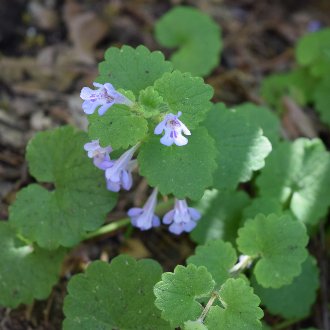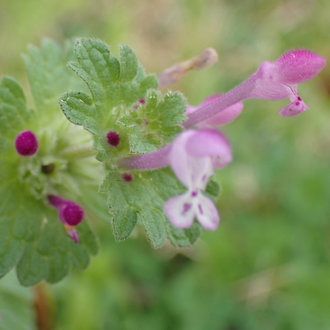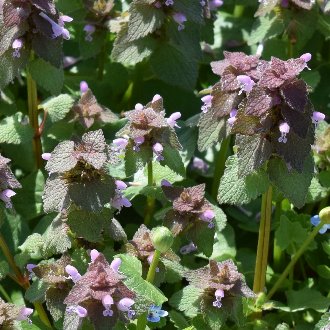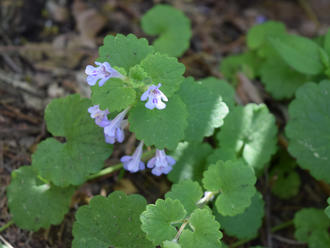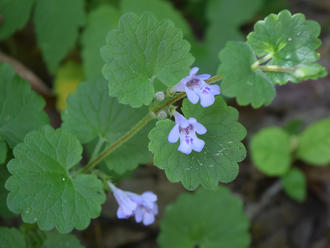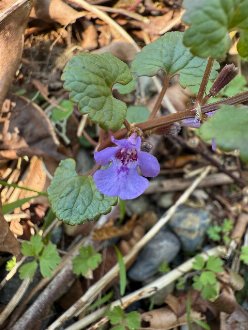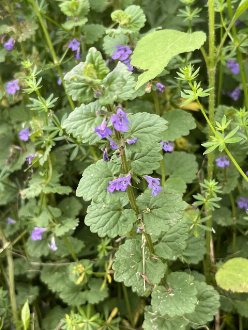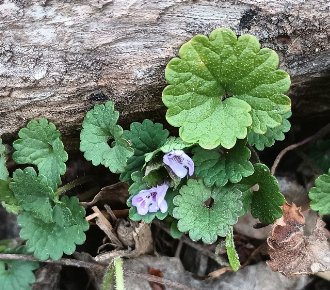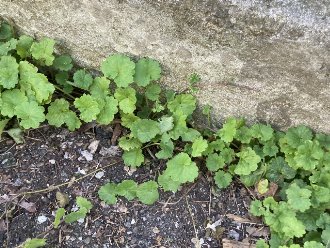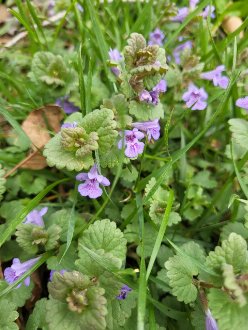Ground Ivy (Glechoma hederacea L.)
Also known as creeping Charlie, gill-over-the-ground, alehoof, tunhoof, field balm.
↑Summary
A perennial native to Europe and widely introduced in North America, where it is common in lawns and gardens.
↑Range - Expand
| Legend | Color |
| Introduced | |
| Introduced or Not Present |
This tentative map is based on our own research. It may have limited data on Canada and/or Mexico, and there is some subjectivity in our assignment of plants as introduced vs. expanded. Read more in this blog post.
Although this plant occurs somewhere in each of these regions, it may only occur in a small part of some or all of them.
This species is also introduced in Canada and Alaska, but we have yet to build these portions of its map.
↑Similar Plants
↑Habitat
Moist areas with exposed soil, but some shade or cover from larger vegetation. Mostly found in gardens and lawns, also found in natural areas, especially openings in floodplains.
↑Life Cycle
Like many mint-family plants, this species is a perennial that reproduces vegetatively by creeping stems. Stems frequently root at the nodes, and branch occasionally. Growth occurs primarily during seasons with moderate temperatures, with the plant often becoming dormant in the hottest weather. Flowers in spring to early summer.
In warm winters, can be evergreen to semi-evergreen; retained leaves often turn a reddish color in winter.
↑Notes
Some of the listed common names for this plant, in some sources, are shared in common with other species and as such we recommend avoiding using them. For example, run-away-robin can be confused with robin runaway (Dalibarda repens), and catsfoot more often refers to Antennaria dioica, which is native to Eurasia and does not occur in the wild in North America. Similarly, the term "creeping Charlie" can also refer to creeping charlie (Pilea nummulariifolia) or high mallow (Malva sylvestris).
↑Links & External Resources
• Ground-Ivy | Fire Effects Information System (FEIS) (About This Site)
• Glechoma hederacea (Ground Ivy) | Illinois Wildflowers (About This Site)
• Glechoma hederacea (Ground Ivy) | USDA PLANTS Database (About This Site)
• Glechoma hederacea | Go Botany (About This Site)
• Glechoma hederacea | Biota of North America Project (BONAP) (About This Site)
• Glechoma hederacea | NatureServe Explorer (About This Site)
• Glechoma hederacea | Missouri Plants (About This Site)
• Ground Ivy | Maryland Biodiversity Project (About This Site)
• Glechoma hederacea (Ground Ivy) | Minnesota Wildflowers (About This Site)
• Glechoma hederacea L. | Plants of the World Online (POWO) (About This Site)
• Glechoma hederacea L. (Gill-over-the-ground, Ground-ivy) | Digital Atlas of the Virginia Flora (About This Site)



